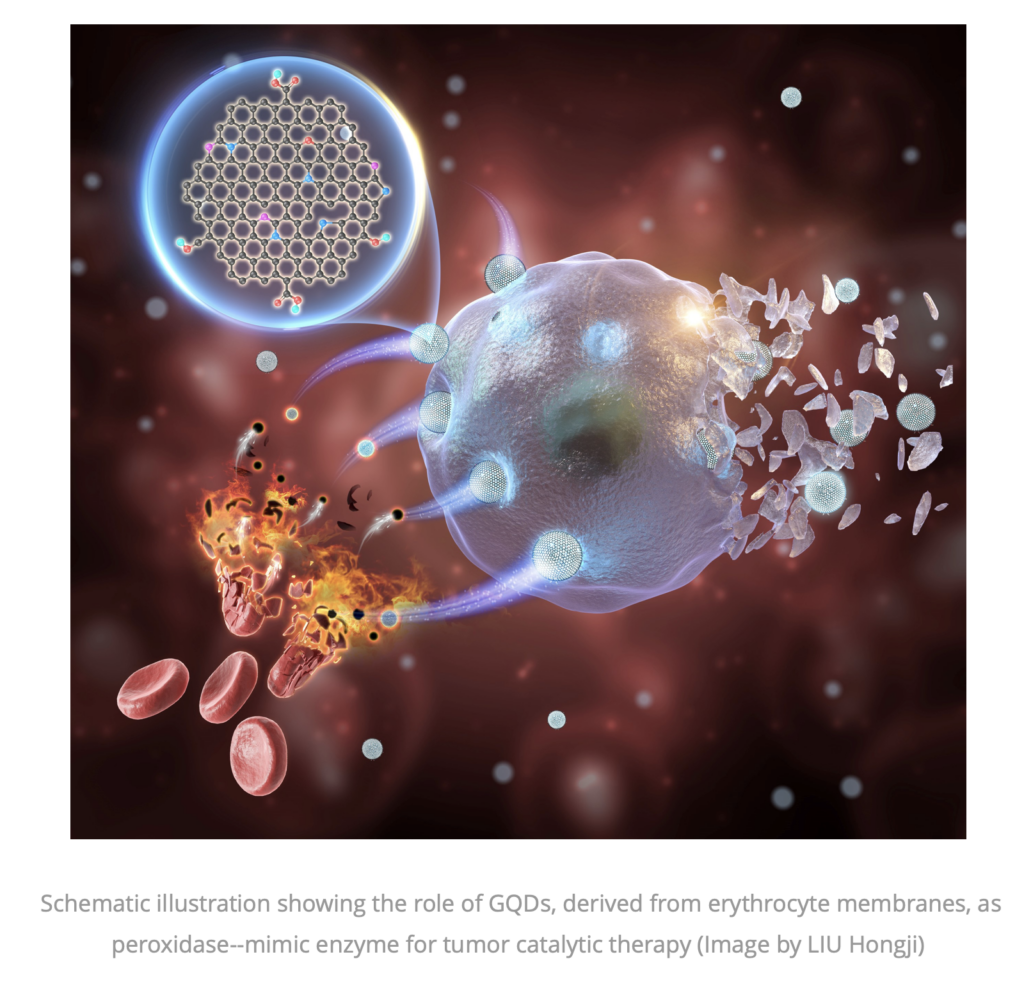https://english.cas.cn/newsroom/research_news/life/202401/t20240111_655053.shtml
https://doi.org/10.1016/j.matt.2023.12.005
A research group around WANG Hui from the CAS Hefei Institutes of Physical Science has proposed a metal-free nanozme based on graphene quantum dots (GQDs) for highly efficient tumor chemodynamic therapy (CDT).
GQDs represent a promising and cost-effective means of addressing the toxicity concerns associated with metal-based nanozymes in tumor CDT. However, the limited catalytic activity of GQDs has posed significant challenges for their clinical application, particularly under challenging catalytic conditions.
To enhance the catalytic performance of the GQD-based nanocatalytic adjuvant, the researchers rationally designed GQDs using a diatomic doping strategy. The synergistic electron effect of introducing nitrogen and phosphorus into GQDs can generate highly localized states near the Fermi level, thus enabling efficient enzymatic activity compared to single heteroatom doping.
The GQDs in this study, derived from erythrocyte membranes, were shown to possess impressive peroxidase-mimicking activity. As a result, the GQDs were highly effective at inducing apoptosis and ferroptosis of cancer cells in vitro. They also selectively targeted tumors, with a tumor inhibition rate as high as 78% after intravenous and 93% after intratumoral injection, with no off-target side effects.A


